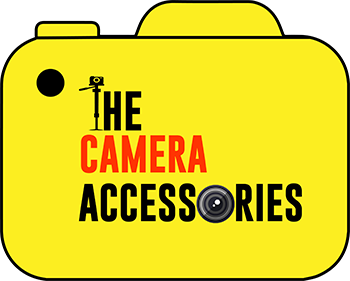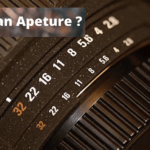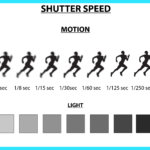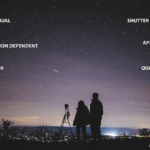Everyone asking the same question when photography was invented, and everyone interested to know. If u want to know the answer u have to go into the depth of photography & The history of the old era. so here is the camera accessories provide you the information.
What is Photography

Photography is a pretty conclusion of art & technology. Period “taking pictures era from the Greek words sense Drawings with light.
Taking pictures was conceived in the 1800s next to the development of the original known idea of the camera named the camera obscura.
The way of revenue of filmic communication and look, taking pictures has distinct artistic abilities. In instruction to know them, one duty first is to comprehend the features of the procedure and the situation.
1 of the greatest significant features is proximity, but not the picture that is recorded is shaped by a lens system in a camera. Upon exposure to the light forming the image. the sensitive material experiences variations in its construction.
A hidden (but reversed) picture called a bad is shaped. and the picture develops noticeable by growth and enduring by fixative with sodium thiosulfate, called “hypo.”
By current materials, the dispensation may take home or may be late for workweeks or calendar months.
Today we take pictures of anything anytime anywhere we want. we don’t even think about it but 200 years ago photography had not yet been invented here.
The History of Photography & When photography was invented.
In the story, humans have been making images of the world around them for at least 30,000 years. since the upper paleolithic period moving ahead through time styles changed. A new subject matter was introduced paleolithicalong with a variety of drawing and painting media.
one medium remained elusive photography the ability to capture and record an actual image from nature and reproduce. It as a permanent work of art.
There is no question that humans have always noticed how water and bubbles create reflections of the real-world dogs certainly. Realize these human beings also know that sunlight passing through crystals projects prisms onto walls and that mirrors glass. and any highly polished surface also have reflective properties.
How Camera Obscura Made


Interesting now might it be possible to capture these projected images onto paper or cloth and enter the camera obscura in its simplest form?
The camera obscura is a pinhole camera or pinhole projector the kind of device made from a box.
Cardboard or otherwise that can be used for viewing a solar eclipse. The name is lLatincamera. which means room or chamber and Obscura meaning dark all modern cameras from the earliest box. camera to the latest digital camera on your phone utilize.
Camera obscura technology the camera obscura effect is another occurring optical phenomenon. in which light rays create a projected image in this case light rays.
Don’t pass through a crystal but through a tiny opening in the wall of a darkened room or chamber and project an image onto the surface opposite the opening like a movie projector.
Due to the way light rays travel through a tiny opening the camera obscura images. Are always projected upside down and reversed because our world is lit up day and night most of us have never seen a camera obscura effect in nature.
But, in earlier times when interior spaces were much darker, it was not as rare a phenomenon. It was described by ancient as well as medieval scholars as images of the sun projected on walls.
Sidewalks during a solar eclipse are examples of a camera obscura effect overlapping leaves. Create thousands of tiny pinhole cameras each projecting an
image of the sun beginning in the 1400s and continuing into the early 19th century. Many different kinds of pinhole cameras were invented called the camera obscures. These devices ranged from small handheld boxes.
Large buildings were created as tourist attractions of course there was always great interest in finding a way to record these images.
on paper including we think by Leonardo da Vinci but all attempts were unsuccessful the first breakthrough was made. in the 1790s by Thomas Wedgewood coated a piece of leather with a silver nitrate solution placed a printed image of himself face down on the leather and laid them.
Out in the sun, the result was this contact print he also made sun prints of leaves on what he called salted paper using the same technique. but silver nitrate a light-sensitive chemical continues to darken until the images disappear.
Altogether unless the chemical process is somehow stopped this is what happened to all of Wedgewood sun prints.
Black & White Photographs era

However, his use of silver nitrate was still an important discovery silver nitrate is what was used until the 1950s to make black and white movie film.
But because it’s flammable it’s no longer being used the next breakthrough was made in 1825. by joseph nisifornieps like Wedgewood nyapps.
Began his experiments by making sun prints. which he called heliographs but instead of using silver nitrate on paper or leather.
He used metal plates which he coated with a solution of bitumen asphalt mixed with lavender oil. And placed these in the sun and after several days of exposure time. He was able to transfer printed images onto the metal plates not yet true photographs.
Close in 1827 types constructed a special box to hold the metal plates of a camera obscura or camera. He placed his camera on a windowsill of his home and opened the shutter to allow sunlight to enter after between nine hours to two days of exposure time accounts vary, he produced the world’s first photograph.
This is his actual photographic plate which doesn’t look like much to modern eyes. But we can enhance the image note that the image is reversed. It actually is a recorded camera obscura effect of his back garden.
As looked in the year 1827 finally the problem was solved camera obscura effect images can be made permanent.
niepz’s later photographs had greater clarity but he died before he could solve the issue of long exposure time. His colleague Louis de Guerre solved that problem finally getting exposure time down to around 30 seconds.
This is one of Daguerre’s first photographs taken from his studio window in Paris in 1838.
It had an exposure time of around seven minutes here’s the image reversed and colorized to show how the scene looked.
If the name Daguerre is familiar that’s because he created the daguerreo type the first practical photographic technique. The daguerreotype was introduced in 1839 the images.

which are on metal plates, not photographic paper are stunning in their clarity as good as modern digital photography. They colorize because they have what in modern terms is called very high PPI pixels per inch.
But they have serious drawbacks. they were very expensive to produce so only wealthy people could afford them. They were reversed images.
They are not prints but originals with no negatives so more copies could not be made finally daguerreotypes.
Used a lot of dangerous chemicals here are the steps first polish a silver plate.
A copper plate in a dark room exposes the plate to heated iodine fumes to make it light. Sensitive take the photo and develop the image by fuming it with heated mercury wash off the mercury developing compound with soda so the image is permanent varnish.
Gold chloride seal under glass and frame colorize if you have a computer.
The drawbacks of the daguerreotype. were at least solved in the 1850s when newer methods of photography were developed.
The ambrotype was of high quality and the image was recorded on glass plates which were much cheaper than silver plated. Metal plates thus made photography affordable to more people and the glass plates could be hand painted to colorize the image.
The tin type used very thin iron plates that took only a few minutes to develop.
The images are dark and not very good. Nonetheless, they only cost a few pennies and are required. No, wait time so the majority of the photographs taken in the 1860s until about 1900 are tin types in addition to making affordable portraits.
They were especially popular at amusement parks and for making joke photos. Because well they were , just throw-away items but like daguerreotypes ambrotypes. tin types were reversed and had no negatives.
They could not be reproduced and tin types use potassium, cyanide, and yipes the calotype was invented by William fox talbot in 1834. A few years before the daguerreotype it was mainly used by photographers. who wanted to use photography as an art form not just as a way of taking portraits.
The calotype used negatives this was finally recognized after nearly 20 years as another key to successful photograph. by using a negative image. to make prints the final photograph was not reversed and multiple copies could be made from the same negative talbot’s calotype.
Used paper negatives which were flimsy and did not hold up well but by adapting calotype technology to ambrotype glass plates. Frederick archer developed the wet plate glass negative in 1851. wet plate glass negatives were as complicated and poisonous.
They produce and develop as daguerreotypes but the images are of excellent quality and can produce unlimited copies wet plate. what were used to produce the many portraits and familiar images of the civil war.
Conclusion
portraits of ordinary soldiers but are tin types in 1871 dry plate glass negatives were invented dry plate negatives. Were pre-coated with light-sensitive chemicals in a factory making the photographer’s job. Both easier and safer than in 1888 George Eastman of the kodak company.
Introduced celluloid film revolutionized photography and soon replaced dry plate glass negative technology. the original film camera or kodak was a leather-covered box that came pre-loaded with a roll of 100 exposure film.
When all the shots were taken, the camera was sent to the kodak factory where the film was developed. Then the camera was loaded with a fresh roll of film. and sent back to the consumer along with the negatives and prints of each shot.
The negatives could be used to make more prints at the turn of the 20th century. The introduction of the brownie camera photography. turned in a new direction and rolls of film were being sold to the consumer and developed at drugstores in the modern era. of photography had begun. you cleared up when photography was invented.
now everyone could be a photographer…
ALSO READ: What is flash photography?




